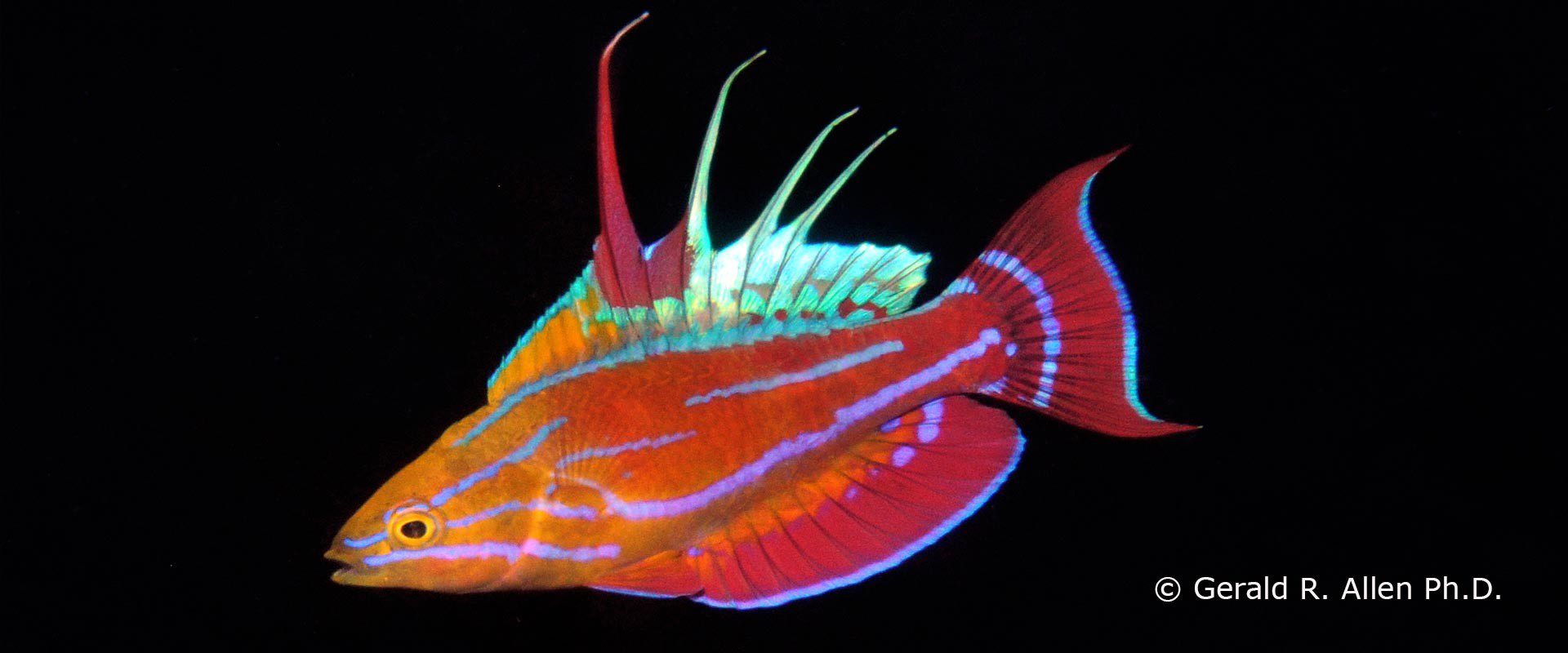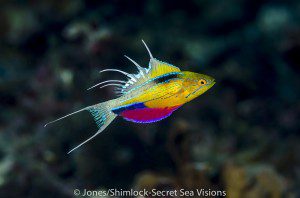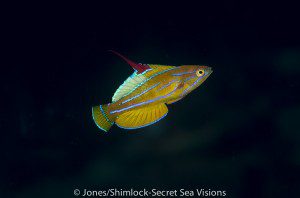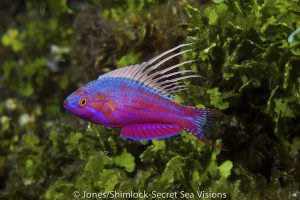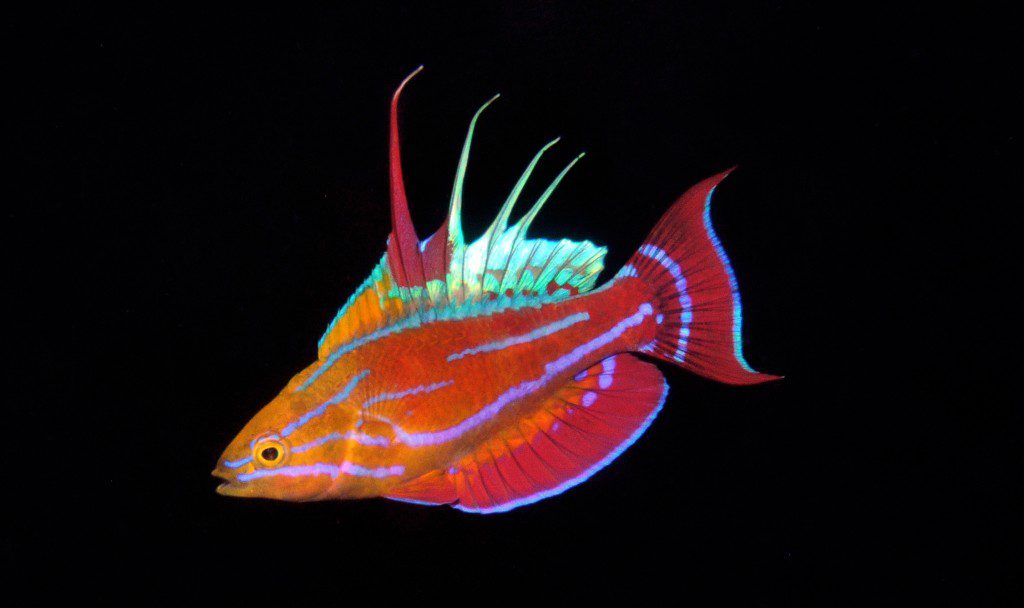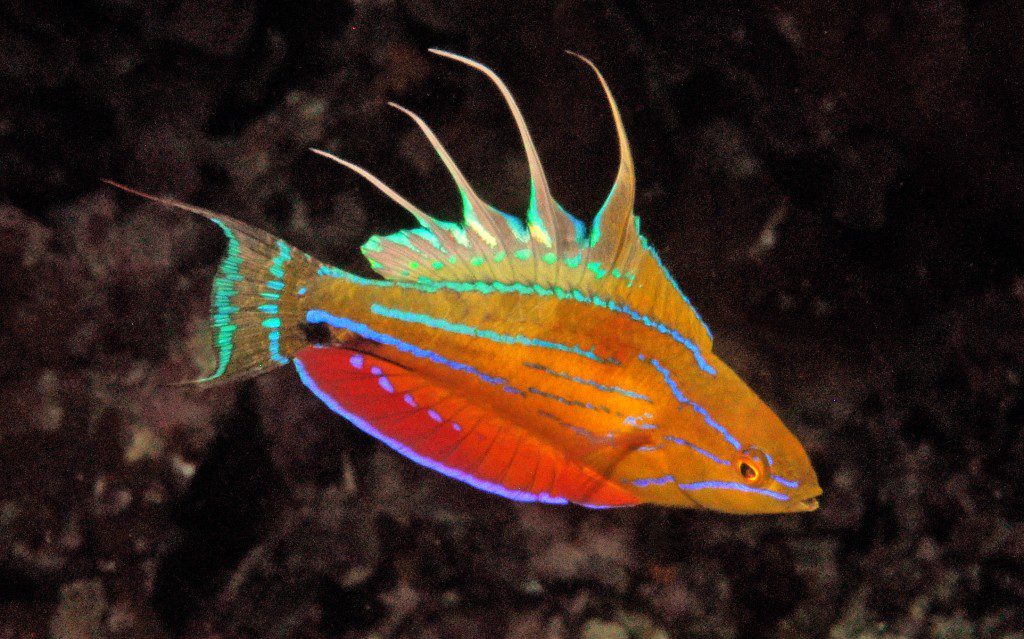“Flasher Beach” by Gerald R. Allen Ph.D.
“Flasher Beach”
by Gerald R. Allen Ph.D.
The Triton Bay dive site known as Flasher Beach is definitely my favourite for observing flasherwrasses. Flasher Beach is totally reliable, with the fish performing their spectacular nuptial displays daily, beginning about one hour before sunset. What makes this site so special is that, in addition to the sheer number of individuals, there are three species present. The Nursalim Flasher (Paracheilinus nursalim) is the most abundant species and easily seen, with lesser numbers of Yellowfin Flasher (P. flavianalis) and Blue Flasher (P. cyaneus). Males of all three species pursue the much smaller females, which appear very similar regardless of species. In regards to mating, apparently any female will suffice as long as it’s a Paracheilinus.
The end result of this indiscriminate spawning behaviour is the proliferation of all sorts of interesting hybrid combinations. During my most recent visit to Flasher Beach (November 2014) we observed a real smorgasbord of hybrids, some of which are presented here.
Our genetic studies show that the Blue and Nursalim flashers are very closely related. In fact we have been unable to separate the two genetically, even though they are clearly different species. The very distinctive male nuptial coloration of the two species is highly diagnostic. We believe that speciation of the two from a common ancestor was a relatively recent event, evidenced by the lack of genetic change. The rapid evolution of strong male secondary sexual characters (neon-like nuptial colours and long fin filaments) has clearly outpaced genetic change. For the most part it has been an effective mechanism for isolating the two species, although not 100% as shown by the hybridization phenomenon frequently found at this site.
This short video by Corrine Mcconnell of the male flashers displaying will give you an idea of just how difficult it is to photograph these amazing fish!
Dr. Gerald (Gerry) R. Allen is the world’s leading tropical marine ichthyologist, and a frequent contributor to this site. He is the author of over 400 scientific articles and 35 books. Along with co-author Dr. Mark Erdmann, he recently released his Magnum Opus, the 3-volume Reef Fishes of the East Indies.





































